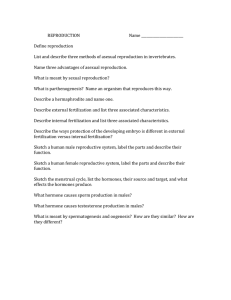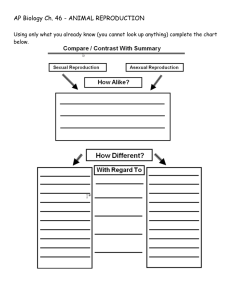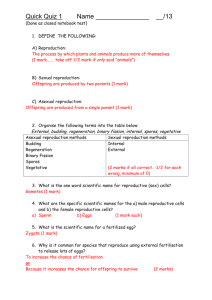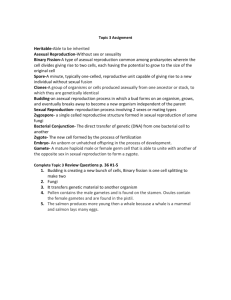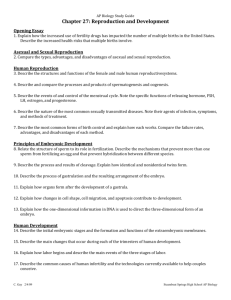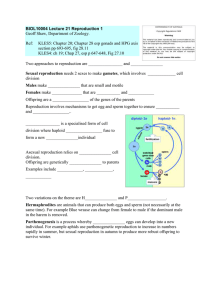AP Biology
advertisement
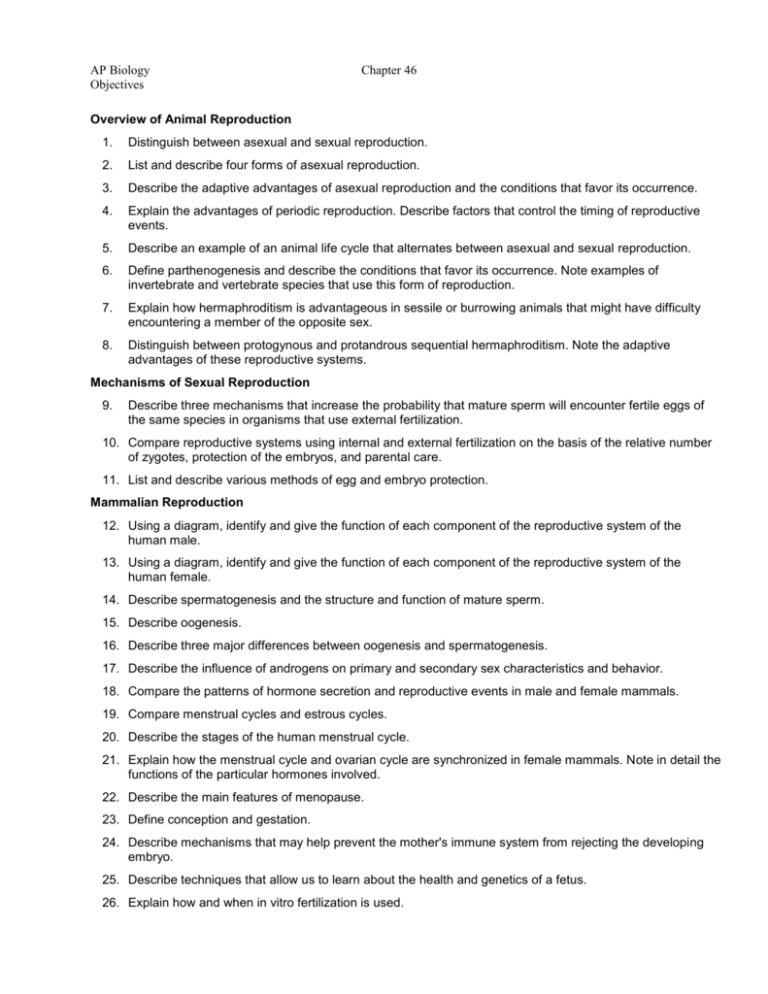
AP Biology Objectives Chapter 46 Overview of Animal Reproduction 1. Distinguish between asexual and sexual reproduction. 2. List and describe four forms of asexual reproduction. 3. Describe the adaptive advantages of asexual reproduction and the conditions that favor its occurrence. 4. Explain the advantages of periodic reproduction. Describe factors that control the timing of reproductive events. 5. Describe an example of an animal life cycle that alternates between asexual and sexual reproduction. 6. Define parthenogenesis and describe the conditions that favor its occurrence. Note examples of invertebrate and vertebrate species that use this form of reproduction. 7. Explain how hermaphroditism is advantageous in sessile or burrowing animals that might have difficulty encountering a member of the opposite sex. 8. Distinguish between protogynous and protandrous sequential hermaphroditism. Note the adaptive advantages of these reproductive systems. Mechanisms of Sexual Reproduction 9. Describe three mechanisms that increase the probability that mature sperm will encounter fertile eggs of the same species in organisms that use external fertilization. 10. Compare reproductive systems using internal and external fertilization on the basis of the relative number of zygotes, protection of the embryos, and parental care. 11. List and describe various methods of egg and embryo protection. Mammalian Reproduction 12. Using a diagram, identify and give the function of each component of the reproductive system of the human male. 13. Using a diagram, identify and give the function of each component of the reproductive system of the human female. 14. Describe spermatogenesis and the structure and function of mature sperm. 15. Describe oogenesis. 16. Describe three major differences between oogenesis and spermatogenesis. 17. Describe the influence of androgens on primary and secondary sex characteristics and behavior. 18. Compare the patterns of hormone secretion and reproductive events in male and female mammals. 19. Compare menstrual cycles and estrous cycles. 20. Describe the stages of the human menstrual cycle. 21. Explain how the menstrual cycle and ovarian cycle are synchronized in female mammals. Note in detail the functions of the particular hormones involved. 22. Describe the main features of menopause. 23. Define conception and gestation. 24. Describe mechanisms that may help prevent the mother's immune system from rejecting the developing embryo. 25. Describe techniques that allow us to learn about the health and genetics of a fetus. 26. Explain how and when in vitro fertilization is used.
